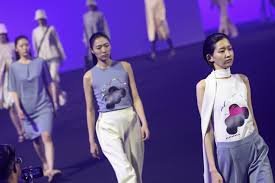The 2024 Fashion Revolution: Key Trends and Innovations in Sustainable Fashion

1. The Emergence of Sustainable Fashion
The fashion industry is undergoing a significant transformation in 2024, driven by a growing awareness of environmental issues and the need for more sustainable practices. Consumers, brands, and designers are increasingly prioritizing sustainability, leading to a revolution in how fashion is produced and consumed.
Eco-Friendly Materials: One of the most significant trends is the shift towards eco-friendly materials. Designers are increasingly using sustainable fabrics such as organic cotton, recycled polyester, and hemp. Brands like Stella McCartney and Patagonia are leading the way by incorporating these materials into their collections, reducing their environmental footprint and promoting circular fashion.
Zero-Waste Design: Zero-waste fashion design is gaining traction as designers seek to minimize waste throughout the production process. This approach involves creating patterns and garments in a way that generates little to no fabric waste. Brands such as Reformation and Tada & Toy are pioneering this trend, showcasing how stylish designs can be achieved with minimal environmental impact.
2. Innovations Driving Sustainable Fashion
Several innovative practices and technologies are driving the sustainable fashion revolution in 2024:
Digital Fashion and Virtual Try-Ons: The rise of digital fashion and virtual try-ons is reducing the need for physical samples and returns. Digital fashion platforms like The Fabricant are creating virtual garments that can be worn in digital spaces, minimizing physical waste and allowing consumers to experiment with new styles without the environmental cost of production and shipping.
Regenerative Agriculture: Regenerative agriculture is a groundbreaking approach to sustainable textile production. This method focuses on restoring soil health, increasing biodiversity, and capturing carbon dioxide through farming practices. Companies like Kering and Eileen Fisher are investing in regenerative cotton and other crops to support sustainable textile sourcing and reduce the industry’s overall carbon footprint.
Closed-Loop Recycling: Closed-loop recycling systems are being implemented to ensure that garments and textiles are recycled into new products at the end of their lifecycle. Initiatives like H&M’s Conscious Collection and Levi’s Waste<Less are working towards creating a closed-loop system where old clothes are repurposed into new fabrics, reducing waste and conserving resources.
3. Consumer and Industry Shifts
The shift towards sustainable fashion is not only driven by innovations but also by changing consumer attitudes and industry practices:
Increased Consumer Awareness: Consumers are becoming more conscious of the environmental impact of their fashion choices. This growing awareness is driving demand for sustainable products and encouraging brands to adopt eco-friendly practices. Platforms like Good On You provide consumers with ratings and reviews of brands based on their sustainability practices, helping shoppers make informed decisions.
Brand Transparency: Transparency in the fashion supply chain is becoming a key factor in consumer purchasing decisions. Brands are increasingly providing information about their sourcing, manufacturing processes, and environmental impact. Initiatives like Fashion Revolution’s #WhoMadeMyClothes campaign are pushing for greater accountability and transparency in the industry.
Collaboration and Certifications: Collaboration between brands, NGOs, and certification bodies is fostering progress in sustainable fashion. Certifications such as Global Organic Textile Standard (GOTS) and Fair Trade are helping to set industry standards and ensure that products meet specific sustainability criteria. Partnerships between companies and organizations are also driving innovation and sharing best practices across the industry.
4. Challenges and Future Directions
Despite the progress being made, there are challenges to overcome in the sustainable fashion revolution:
Scalability: Scaling sustainable practices across the fashion industry remains a challenge. Many sustainable innovations are still niche or limited in scale, and achieving widespread adoption requires significant investment and collaboration.
Affordability: Sustainable fashion often comes with a higher price tag due to the cost of eco-friendly materials and ethical production processes. Making sustainable fashion more affordable and accessible to a broader audience is a key challenge for the industry.
Consumer Behavior: Changing consumer behavior and encouraging more sustainable consumption patterns is essential. Educating consumers about the benefits of sustainable fashion and promoting practices such as buying less, choosing quality over quantity, and recycling are important steps in driving the industry towards greater sustainability.
Conclusion
The fashion revolution in 2024 is characterized by a strong focus on sustainability and innovation. From eco-friendly materials and zero-waste design to digital fashion and closed-loop recycling, the industry is making significant strides towards reducing its environmental impact. As consumer awareness and industry practices continue to evolve, the future of fashion promises to be more sustainable and mindful of its ecological footprint.







